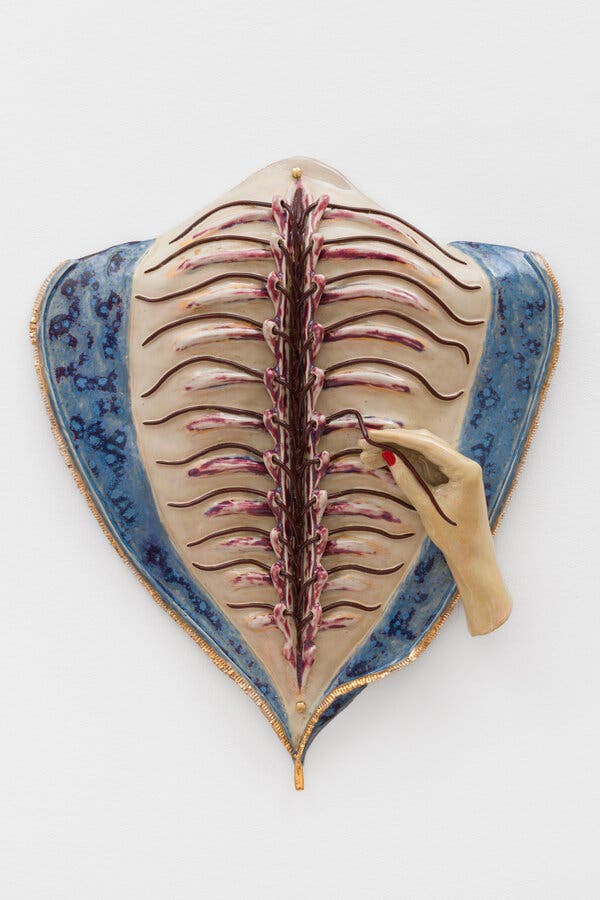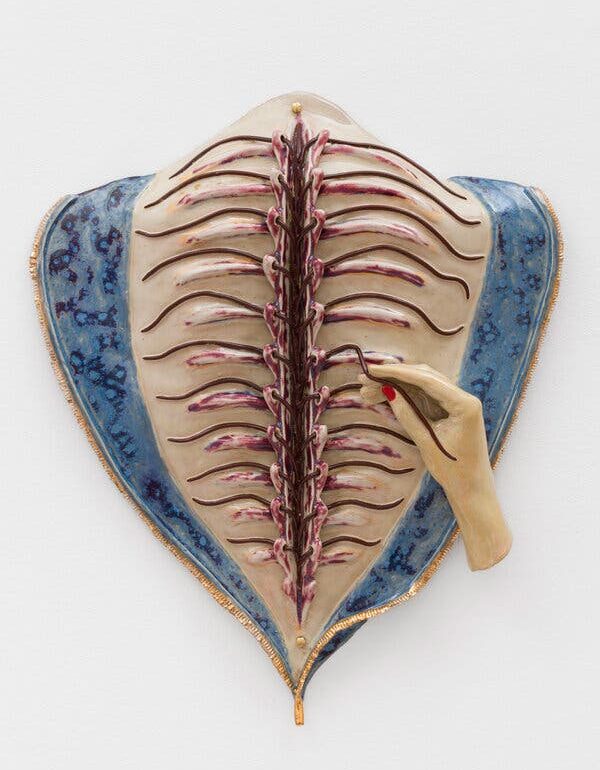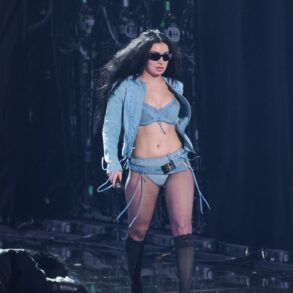In the London-based artist Paloma Proudfoot’s sculpture “Threaded” (2024), a disembodied hand with cherry-red fingernails loops a vein, as smooth as a ribbon, around an exposed spinal cord. The work is made of glazed ceramic, its delicacy contrasting with the gruesomeness of its subject matter. Proudfoot, 32, is inspired by anatomical models, and “Threaded” is part of a series of sculptures in which she explores the paternalistic experiments that informed the field of hypnotherapy and the treatment of hysteria in 19th-century France. While the field was pioneered by a man, Jean-Martin Charcot, in Proudfoot’s sculptures, the hands that manipulate the bodies and minds of the works’ female subjects are women’s — severed at the wrist, their nails neatly manicured.

In art and otherwise, disembodied female parts aren’t typically associated with liberation. Gustave Courbet’s 1866 painting “The Origin of the World,” with its faceless body and exposed vulva, is a much-cited example of a male artist objectifying a female subject, even as he seems to revere her. While the sexualized parts of the female form have more frequently been focal points, the portrayal of women’s hands has often been just as loaded — their fingers made dainty to suggest passivity or arched to signal gentle refinement. In Sandro Botticelli’s iconic “The Birth of Venus” (circa 1485), the titular goddess covers her nude form with delicate, rosy pink fingers. Amid a wider movement challenging the depersonalization and denigration of female and queer bodies in contemporary culture, it’s perhaps unsurprising that hands — the body parts most suggestive of agency — are proliferating in sculpture and painting, asserting their ability to be provocative, even dangerous.
The British artist Charlotte Edey, 32, whose work appeared in a solo booth with Ginny on Frederick at Frieze London this month, paints hands that stretch through windows and bend playfully around walls, as if “unconstrained by bone, tendon or gravity,” she says. “They push, pull and orchestrate within the works like amorphous conductors.” In her supernatural tapestry “Freshwater” (2018), a giant, godlike feminine hand hovers above a lifeless landscape, its blue shadow appearing like a lake on the ground; in Edey’s work, a woman’s hand can control and revive the world around it.






